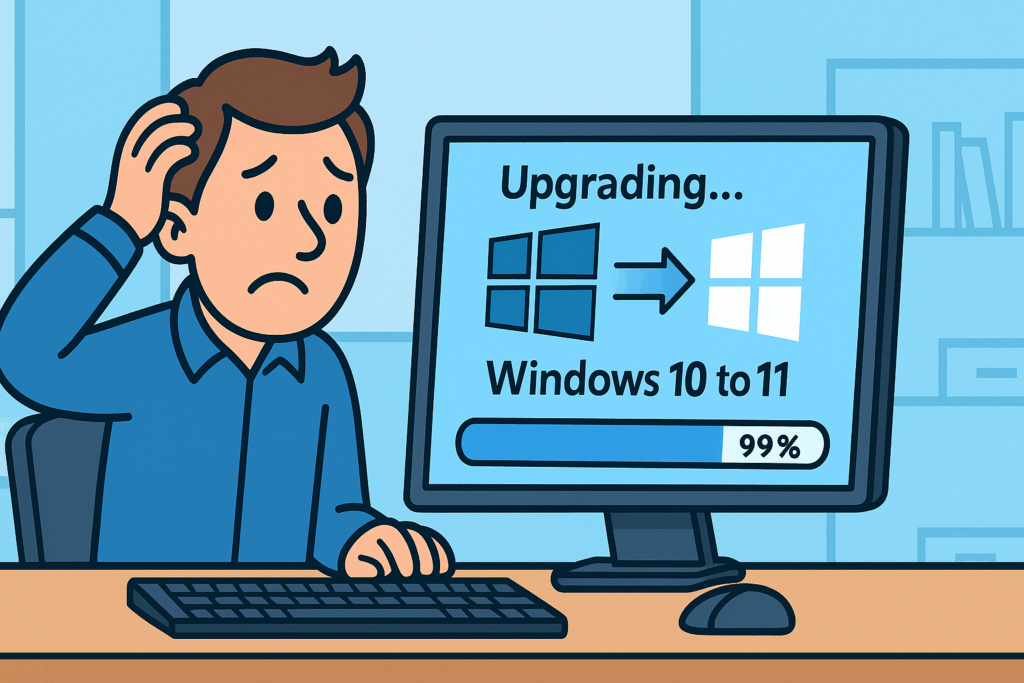System Monitoring Made Simple for IT Admins & Security Pros
Sysmon (System Monitor) is part of Microsoft’s Sysinternals Suite, and it gives you deep visibility into process creation, network connections, file changes, and system activity. For threat detection, forensics, and baselining, Sysmon is one of the most powerful free tools you can deploy.
In this guide, I’ll walk through the step-by-step process of installing Sysmon cleanly on a Windows 11 machine, loading a hardened configuration, enabling the event log, and validating that everything is working.
This is the exact method I used on my laptop — clean, repeatable, and production-ready.
1. Prerequisites
Before you start:
- Log in as a user with Local Administrator rights.
- Open PowerShell as Administrator.
You’ll be using a mixture of PowerShell commands and Event Viewer, so make sure you have admin elevation.
2. Download Sysinternals Suite
Microsoft distributes Sysmon inside the Sysinternals Suite ZIP.
- Download Sysinternals Suite from Microsoft’s official site.
- Create a clean directory:
New-Item -ItemType Directory -Path "C:\Sysinternals" -Force
- Extract the ZIP:
Expand-Archive "$env:USERPROFILE\Downloads\SysinternalsSuite.zip" `
-DestinationPath "C:\Sysinternals" -Force
- Verify Sysmon64.exe exists:
Get-ChildItem "C:\Sysinternals" -Filter Sysmon64.exe -Recurse
You should see something similar to:
Sysmon64.exe Length: 4563248
If the file is non-zero in size, it’s valid.
3. Prepare Your Sysmon Configuration File
Sysmon must be installed with a configuration that tells it what to monitor.
You can use:
- A basic config
- A hardened config
- The community-recommended SwiftOnSecurity config
Here’s how to set up a config folder:
New-Item -ItemType Directory -Path "C:\Scripts\Sysmon" -Force
Copy your Sysmon config into it:
Copy-Item "$env:USERPROFILE\Downloads\sysmonconfig-export.xml" `
"C:\Scripts\Sysmon\sysmonconfig.xml" -Force
Verify it:
Get-ChildItem "C:\Scripts\Sysmon"
You should see:
sysmonconfig.xml Length: (non-zero)
4. Install Sysmon with the Config
Navigate to the Sysinternals directory:
cd "C:\Sysinternals"
If Sysmon was previously installed, uninstall it first:
.\Sysmon64.exe -u force
Then install it cleanly with your XML config:
.\Sysmon64.exe -i C:\Scripts\Sysmon\sysmonconfig.xml
Expected output:
Sysmon64 installed.
SysmonDrv installed.
Sysmon64 started.
Check service status:
Get-Service Sysmon64
You should see:
Running Sysmon64
5. Register the Sysmon Event Manifest
This step ensures the Sysmon event log is visible in Event Viewer.
.\Sysmon64.exe -m
Output:
Event manifest/format registered successfully
6. Enable the Sysmon Event Log
Check if the Sysmon log exists:
wevtutil el | Select-String "Sysmon"
You should see:
Microsoft-Windows-Sysmon/Operational
Enable the log:
wevtutil sl "Microsoft-Windows-Sysmon/Operational" /e:true
7. Validate That Sysmon Is Working
Method A: Quick PowerShell validation
wevtutil qe Microsoft-Windows-Sysmon/Operational /c:5 /f:text
If you see any events (Event ID 1, 5, etc.), Sysmon is working.
Method B: Event Viewer
Open Event Viewer:
Applications and Services Logs
→ Microsoft
→ Windows
→ Sysmon
→ Operational
You should start seeing:
- Event ID 1 – Process Create
- Event ID 5 – Process Terminate
- Other IDs depending on your config
Method C: Live test
Run:
Start-Process notepad.exe
Then refresh Sysmon → Operational log.
You should immediately see a new Event ID 1 logging Notepad’s process creation.
If you see this event, Sysmon is fully operational.
8. Optional: Create a Shortcut for Faster Access
Desktop Shortcut
- Right-click Desktop → New → Shortcut
- Enter:
eventvwr.msc /c:Microsoft-Windows-Sysmon/Operational
- Name it Sysmon Log
Now you can open Sysmon in one click.
Event Viewer Favorites
Right-click Sysmon → Operational → Add to Favorites.
9. Updating the Sysmon Config Later
If you want to modify or replace the config:
cd C:\Sysinternals
.\Sysmon64.exe -c C:\Scripts\Sysmon\sysmonconfig.xml
You should see:
Configuration updated.
No reinstall required.
10. Uninstall Sysmon (if needed)
cd C:\Sysinternals
.\Sysmon64.exe -u force
This removes:
- Sysmon64 service
- SysmonDrv driver
- Registry entries
- Event manifest
Conclusion
Once installed, Sysmon becomes a powerful source of system telemetry for:
- Threat hunting
- Malware investigation
- Lateral movement detection
- Process monitoring
- Incident response
- Forensic analysis
With a hardened config, Sysmon gives deep visibility with minimal overhead — making it an essential component of any Windows security stack.
If you’re deploying Sysmon across multiple endpoints (like we do at work), you can automate it using Intune, GPO, or a custom PowerShell deployment package.
© 2012–2025 Jet Mariano. All rights reserved.
For usage terms, please see the Legal Disclaimer.





